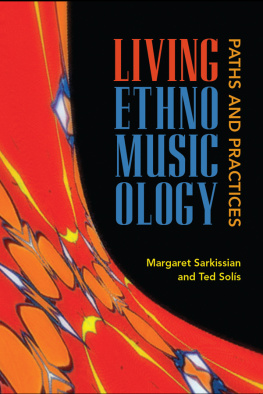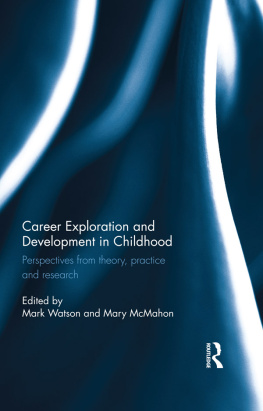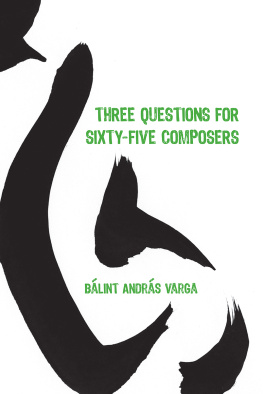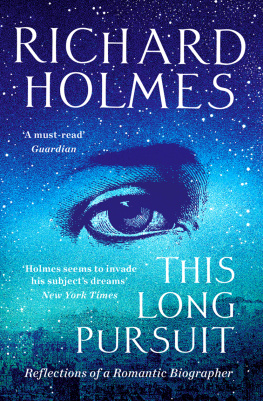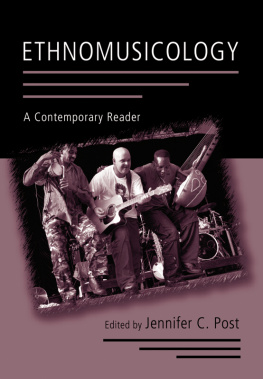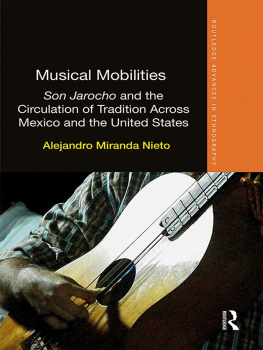Acknowledgments
We are, of course, infinitely grateful to each of our fifty interlocutors. Some were already friends, and others we knew slightly at the outset, but many were new acquaintances whowith great generosity and trustagreed to share their lives in conversation with one or both of us. All have been remarkably patient with our slow progress over the ensuing years. We are deeply saddened that three of this group passed away before we finished the project: Elizabeth Travassos Lins (2013), Judy McCulloh (2014), and Clara Henderson (2016). We have retained their conversations, with the blessings of their spouses/family members as a tribute to their lasting impact on our field. In each case, we asked a close friend of the individual to contribute a short postscript. We are very grateful to those colleagues, Anthony Seeger, Margo Chaney, and Alan R. Burdette, respectively.
We owe a great debt to the kind souls who helped get our two-person project off the ground. Without the help of some intrepid students, we would still be transcribing interviews in between semesters and during sabbaticals. Margaret would like to thank Smith College student Jaclyn Perreault, who spent a semester transcribing interviews, and Provost Marilyn Schuster for funding Jaclyn's assistantship; Emilie Coakley (then at Mount Holyoke College) and Emily Matz (Smith College) also assisted with transcriptions. Sean Norton, former Hampshire College student and good friend, stepped in toward the end with editorial help that got us over the finish line. Frank Citino (Clark Science Center, Smith College) and Jeff Heath (Center for Media Production, Smith College) provided invaluable technical assistance; colleagues Marianna Ritchey and Kariann Goldschmitt advised us on selecting our final interviewee; and friends Steve Waksman and Ruth Solie provided sage advice over the years. Last, but definitely not least, Margaret would like to thank Ted for being who he isan exceptionally kind-hearted (if sometimes impish) friend and trusted colleague. Ted would like to thank Katie Palmer and Amy Swietlik, former students and good friends, who offered excellent advice on the book's organization. He would like to express gratitude and deep appreciation for the privilege of working with his patient, compassionate, and inspirational dear friend Margaret during these years; the Yiddish inflection marks his highest tribute: Everybody should be so lucky! We are grateful to Tim Cooley and David Harnish for invaluable feedback on earlier versions of this project and, especially, to our institutions for providing sabbatical leaves, travel funding, and other research support.
None of this would have seen the light of day without help from the University of Illinois Press. Laurie Matheson, in particular, took an early interest in our project and shepherded us through the review process. We are grateful for her encouragement and guidance. We would also like to thank the editorial and production staff at the press, especially Julie Gay, Jennifer Argo, and Dustin Hubbart. We are also grateful to our indexer, Nicole V. Gagn.
We will always be grateful to our principal academic teachers in ethnomusicology: in Ted's case, Barbara B. Smith and Bruno Nettl; in Margaret's, Bruno Nettl, Clark Cunningham, Charles Capwell, and the late David Stigberg, who taught us so much about ethnomusicology, fieldwork, and ethnographic writing. We are honored that Bruno Nettl agreed to write the foreword for this project and warmly thank Mark Slobin for his thoughts in the afterword.
Publication has been made possible by subventions from the Quitipls Foundation, Smith College Provost's Office, Arizona State University's Herberger Institute for Design and the Arts, and the Arizona State University School of Music. We are extraordinarily grateful for this financial assistance.
We would like to thank our partners Julie Codell and Jerry Dennerline for sticking with us through the whole process, for their constant support, sage advice, and limitless patience. Finally, our book includes only fifty out of more than two thousand active ethnomusicologists; we wish we could have included everyone in this community we revere.
Afterword
The people profiled in this book, including the authors, have come to ethnomusicology over three generations on several continents. Wrapping up their experience and emotions seems too tidy. But four threads shine through this tapestry, which I'll try to tug without unwinding the texture. Let's call it the Four A's of Ethnomusicology.
Attraction. The draw to the field can arrive so early, as with Hood's family legacy, that it can be a preexisting condition: It has always been close to my heart, and if by some medical procedure it were removed, life would stop beating. Or it can come later in life as a guiding light. For Qureshi, ethnomusicology was like a beacon, a strong metaphor suggesting a move away from shadow to light. It's hard and even unnecessary to analyze the many types of attraction, but Becker summarizes the magnetic power of the field eloquently: I was, in my mind, open to the beauties and mysteries of all peoples musics. Even more optically, Benary thinks of ethnomusicology as a way of sensing music vividly: Ethnomusicology is like a set of sunglasses I put on, a perspective that colors my relationship to musical situations.
The coziness of the discipline helps support the attraction, as Manuel says: One of the great things about the field for me is that it's just such a great group of people. I love our conferences; the people are so creative. For me that is one of the great delights of the profession. Lau locates his attraction in the virtues of an ideal practitioner: My image of an ethnomusicologist is someone who is open minded, inclusive, tolerant, kind, compassionate, and full of aloha! Who wouldn't be drawn to such a congenial interest group, rare not just in academia but also in the other bureaucracies that house ethnomusicologists?
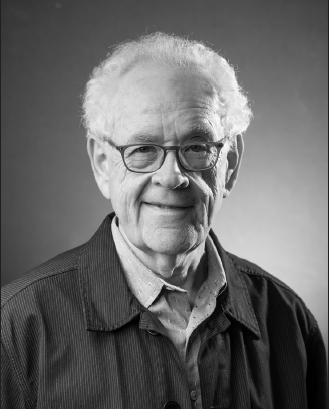
Mark Slobin, 2018. Photo by Manny Parks.
Ambivalence. But the lenses are not so rosy. Becker follows her 1960s beauties and mysteries of music with this caveat: It was a position of moral superiority. In the present context, that interpretation appears nave. Always clear eyed and open eared, ethnomusicologists sense the dangers of the very attraction that drew them in. Blum spells it out: A self-image as an ethnomusicologist needs to include a willingness not to ignore the harm that has been and is being done to the weak by the strong. Even the authors admit to a deep sense of ambivalence in their blend of pleasures, positive engagement, and perils of position: The synergy of bittersweet guilt, pleasure, deep personal relationships, and music is extraordinarily rich.
Ambiguity. Partly, ambivalence comes from the inbuilt ambiguity of ethnomusicology itself. As Blum puts it, I don't think I've ever thought of ethnomusicology as a clearly defined field, and I don't think it should be. Even those, like Nooshin, who say they do ethnomusicology don't necessarily want to be counted in the guild: I don't think there is any doubt that what I do is ethnomusicology, but whether I define myself solely as an ethnomusicologist is another matter. No surprise: the field arose almost 150 years ago from very mixed motivations among Europeans busily cutting out disciplines from the rich fabric of natural philosophy, with its blend of scientific study and humanistic understanding of mankind. It's a ragged robe to put on as your daily outfit. It doesn't help that lay people you meet don't really grasp what it is you do. And figuring out the right way to deal with the music and musicians you love gets harder when the world of work thinks you're a square peg in their round pigeonholes, as the writers above often remark.

